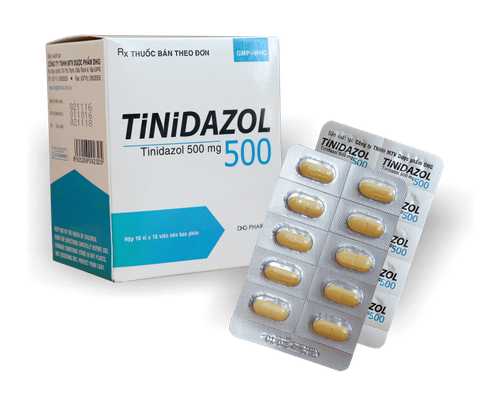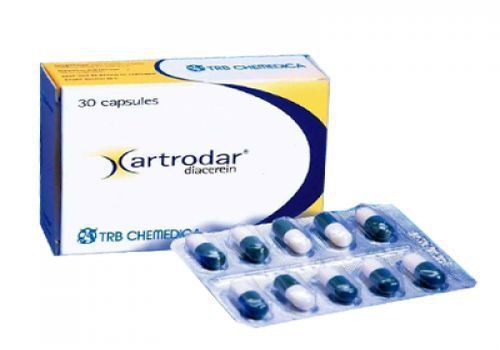The article is professionally consulted by Lê Dương Tiến, MA, MD - Specialist in General Internal Medicine - Department of Outpatient & Internal Medicine - Vinmec Da Nang International General Hospital. MD. Tiến has many years of experience in musculoskeletal internal medicine.
Muscle Abscess due to Bacterial Infection is one of the common infectious conditions in internal medicine, resulting from the inflammation of skeletal muscle due to the invasion of specific bacterial pathogens. Although it does not directly threaten the patient's life, a muscle abscess caused by infection requires prompt diagnosis and treatment to avoid potential complications.
1. Muscle abscess due to infection
Muscle abscess is a condition where the skeletal muscle tissue is damaged, forming pus-filled cavities that cause clinical symptoms of infection. This typically occurs after the patient has a skin infection or a wound on the body. Muscle abscesses caused by bacterial infections can be triggered by various types of bacteria, with the most common being Staphylococcus aureus, as well as other bacteria such as Streptococcus, Pneumococcus, Meningococcus, Neisseria gonorrhoeae,... Muscle infections can occur at any location in the body and often affect only one muscle. The risk is higher in patients who suffer from bacteremia. Particularly, patients with conditions that weaken the immune system may experience muscle abscesses affecting multiple muscles.
A classic example is a psoas-iliacus abscess, which often occurs in patients with a history of urinary or genital infections, or those who have undergone abdominal surgery. The cause is commonly bacterial, such as Mycobacterium tuberculosis or other pus-producing bacteria. Common clinical symptoms of a psoas-iliacus abscess include lower rib pain, inability to extend the leg on the side of the affected muscle, and when hip joint examination is performed, no abnormalities are found in the hip joint itself.

Some typical manifestations of common muscle abscesses in patients include:
- Stage 1 – First 1-2 weeks: The muscle becomes swollen, with a firm consistency when palpated, and may or may not be red. The patient may experience mild pain.
- Stage 2 – 2-4 weeks after onset: The muscle starts to become clearly swollen, with significant pain. When palpated, the muscle feels soft and boggy. Aspiration reveals the presence of pus.
- Final stage: Complications of muscle abscesses, such as skin abscesses or septic shock, may occur in the patient.
Additionally, the patient may present symptoms of systemic infection, including:
- High fever ranging from 39°C to 40°C, typically continuous with fluctuations.
- Weight loss and fatigue.
- Dry lips, coated tongue, and other signs of infection.

In addition to the clinical signs, patients are also subjected to some paraclinical tests to support the diagnosis, including:
- Complete blood count (CBC): The white blood cell count may increase, primarily with neutrophils. The erythrocyte sedimentation rate (ESR) may be elevated, as well as CRP levels, fibrinogen, globulin, and procalcitonin. In some cases, blood cultures may yield positive results. The patient may be advised to perform an aspiration of the abscess fluid for further examination, which may show a significant presence of degenerated neutrophils. Alternatively, the fluid may be cultured, examined microscopically, or subjected to PCR testing for tuberculosis to help with differential diagnosis.
- Muscle ultrasound: This is done to investigate issues such as whether the muscle volume has increased due to infection and if there are any structural changes to the muscle.
- X-ray: Used to assess for bone inflammation, osteomyelitis, or imaging of the psoas muscle and the presence of gas shadows in cases of psoas-iliacus abscess. If the abscess is caused by a bacterial tuberculosis infection, X-rays may show calcification at the abscess site.
- CT scan: Helps in early detection of muscle abscesses, as it allows examination of areas that other imaging techniques may not penetrate.
- MRI: Typically indicated in cases of psoas-iliacus abscesses.
2. Treatment regimen for muscle abscess
The main principles in the treatment of muscle abscesses due to infection are:

- The treatment of muscle abscesses with antibiotics should be initiated early, at high doses, via the intravenous route, and maintained for a duration of 4 to 6 weeks.
- The choice of antibiotics should ideally be based on the results of culture and sensitivity testing. If the results are not yet available, empirical antibiotic therapy should be started based on clinical experience.
Some common approaches to antibiotic use in the treatment of muscle abscesses include:
- The first-line antibiotic for treating muscle abscesses should target Staphylococcus aureus, particularly Methicillin. If signs of resistance are evident, Vancomycin can be substituted.
- In patients with immunodeficiency, broad-spectrum antibiotics should be used to cover Gram-negative bacteria as well as anaerobic organisms. This can include combinations of Vancomycin with either a Carbapenem-class antibiotic or Piperacillin. If the infection is confirmed to be caused by anaerobic bacteria, Clindamycin is often the antibiotic of choice.
In addition to medical treatment with antibiotics, procedures to drain the abscess (either through needle aspiration or surgical drainage) may also be necessary. Alongside symptom management, supportive care to improve the patient's overall condition and prevent septic shock should be implemented.
Muscle abscesses due to bacterial infections can lead to severe complications such as sepsis, septic shock, and even death in cases of rapid disease progression. It is essential to identify risk factors to minimize the likelihood of developing the condition. If any suspicious symptoms arise, patients should promptly seek care at a reputable medical facility for early examination, diagnosis, and treatment.
To arrange an appointment, please call HOTLINE or make your reservation directly HERE. You may also download the MyVinmec app to schedule appointments faster and manage your reservations more conveniently.









